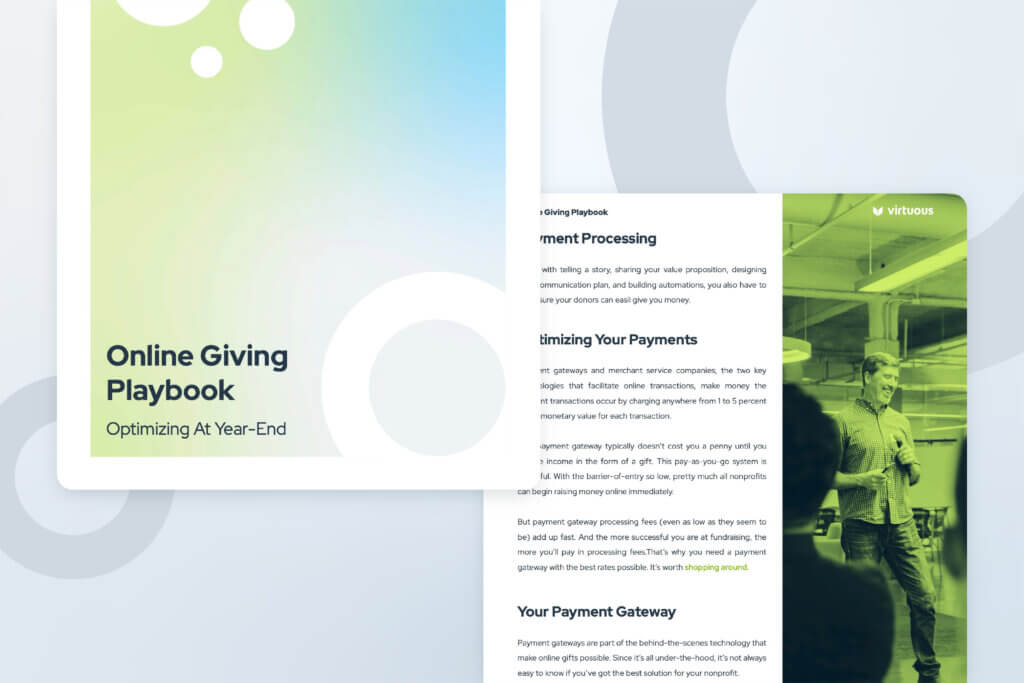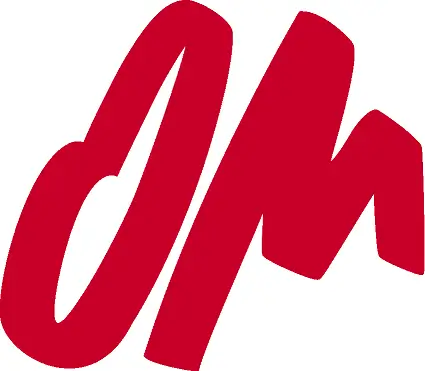For most nonprofits, email is a major part of Giving Tuesday. If your inbox gets as crowded as mine does this time of year, you may think that the global day of giving could basically be called, “the global day of nonprofits sending emails.”
At this point, you may have an established routine for Giving Tuesday. Maybe you’re running a peer-to-peer campaign, maybe you use it as a day to thank your donors, or perhaps it’s the kick-off for year-end fundraising. Or maybe you haven’t quite hit your stride and are still experimenting with different options.
Whether you’re a Giving Tuesday pro or trying a dedicated campaign for the first time, here are three emails you won’t want to miss. These may not be the only emails you send on Giving Tuesday, but make sure these three are in the mix in order to create a positive donor experience this year.
Email Best Practices To Get Started
Before you start composing emails and hitting “send,” make sure you’re creating a responsive fundraising experience:
Segment Your List
One-size-fits-all, “spray-and-pray” messages are easy to ignore.
Reach out to your donors with the communications that are the most relevant for them by segmenting your list. Splitting up your list by giving amount is an option, but if you’re looking for relevance and resonance, think beyond their giving capacity and consider:
- Giving history: Are they regular monthly givers? Year-end only? Last Year But Unfortunately Not This (LYBUNTS)? Lapsed? Major givers?
- Involvement: Are they alumni, parents, volunteers?
- Interests: Which programs and appeals have they show the most interest in?
Personalize
Use merge tags appropriately to make sure you’re greeting your supporters by their preferred name. Starting with a generic “Dear Friend” immediately makes the tone impersonal.
Technology like Virtuous’ Smart Gift Arrays can help personalize your suggestions further by offering online donors gift options that are customized to their giving history. So an existing $20 donor who clicks on your email and lands on a giving form will receive a different range of options than a $200 donor.
Personalize your organization by sending the email from a specific person and having one signature. Don’t send from a no-reply email address, or an “info@” address, it’s too easy to ignore an email that doesn’t seem to be from anyone.
Savvy Subject Lines
Your supporters are going to get approximately a thousand emails with a subject line that basically says, “It’s Giving Tuesday, support XYZ Organization!” Think outside the box and inspire people to open your email by:
- Asking a question
- Using a quote from the story inside
- Making an appropriate joke
- Personalizing the subject line with their name
3 Giving Tuesday Email Templates
1. The Warm-Up Message
This first email is sent before Giving Tuesday, and in fact, doesn’t mention the day at all. Early in November, make contact with your supporters, especially the ones who haven’t given yet this year. Your message should be one of gratitude and celebration, not solicitation. You’re just touching base to say thank you, and ensure that they’re receiving a touchpoint that isn’t asking for money before the next time you ask.
The Template:
Hi Angie,
This November, I’m thinking about gratitude. I’m so grateful for your years of support for Colors for Kids. Thanks to your dedication, kids at four community middle schools have activated their creativity, expressed themselves and learned new skills with after-school arts programming.
I asked a few of the students in the Tuesday painting class at Central Middle School what they were most grateful for, and I thought you’d like to hear some of their answers.
“Colors. I’m so grateful to live in a world with so many colors.”–Nina, 7th grade
“Making new friends and working together on projects.”– Joe, 6th grade
“Space to make a mess and try new things.” –Shana, 8th grade
I’m grateful for you, Angie! Thank you for being part of our community.
Best,
Erica Executive Director
What It Does:
- Reminds the supporter of your organization
- Celebrates their giving
- Focuses on the impact of their gift
- Lays the groundwork to ask without treating the supporter like an ATM
2. The Storytelling Message
Giving is personal and emotional. The reasons your supporters give have to do with their passions and their values. In light of that, “It’s Giving Tuesday” is not the most compelling value proposition to offer them (see also: “It is December!” and “It is the end of our fiscal year.”)
Instead of emphasizing simply that it’s Giving Tuesday, make sure you’re communicating about the cause they care about and the impact they’ll have. Tell a story, engage their imaginations, and show them why their giving matters. You can mention that it’s Giving Tuesday, but don’t let that be the sole reason you give them to donate.
The Template:
Hi Dave,
“I don’t like talking in front of people, but my art can speak for me.”
Margo is a quiet sixth grader at Central Middle School. She doesn’t like talking in class and feels uncomfortable when all eyes are on her. But her artwork commands attention. Her paintings and drawings tell her story and show her feelings with bright colors, bold shapes, and inventive compositions. Through her artwork at Colors for Kids, Margo has developed a strong practice of expressing herself and sharing her work with others. This has increased her confidence as an artist and in her other classes.
This Giving Tuesday, celebrate the global day of giving and support students like Margo by making a gift to Colors for Kids. Your gift will support the afterschool program at Central and three other middle schools, ensuring students have all the tools and supplies they need to explore art and their own potential.
Low-income students who are highly engaged in the arts are twice as likely to graduate college as their peers who don’t receive arts education. But the schools in our community with the lowest income levels are also the schools that do not have an arts program for middle-grade students. With your help, Colors for Kids is filling that gap at these city schools with after-school arts programs.
Your gift of $25 supplies a student with their own toolkit to make art at school and at home. Will you give today?
Best,
Erica Executive Director
What It Does:
- Engages emotions
- Shows impact
- Gets specific about what the gift will do
- Showcases your unique value proposition
3. The Message To Close The Loop
What happens after Giving Tuesday? Whether your supporters gave or not, let them know how it went, any goals you reached, and what happens next. Celebrate their generosity and show that you appreciate them. This is particularly important because your year-end campaign is coming right up, and you’ll want to be sure to close the loop on Giving Tuesday before you make another ask.
The Template
Dear Kimberly,
Because of you, the kids at Central Middle School, Roosevelt Jr. High, Wheeler Middle School, and Lockwood Intermediate will have all the tools and art supplies they need for a robust after-school arts program.
Thank you so much for your support of Colors for Kids. You make such a difference. Our community contributed $10,000 yesterday on Giving Tuesday to support middle school arts programming. The schools in our community with the lowest income levels are also the schools that do not have an arts program for middle-grade students.
Thanks to your support of Colors for Kids, we can fill in that gap and give students the benefits of an arts education.
I’m so glad you’re part of our community!
Sincerely,
Erica Executive Director
What It Does:
- Celebrates generosity
- Expresses gratitude
- Connects to impact
- Immediately closes the loop
Optimize Your Year-End Fundraising With Virtuous

Email is just one part of a multi-channel campaign, and Giving Tuesday is just the beginning of the year-end fundraising season. To make the most of your online fundraising in December and beyond, get your copy of The Online Giving Playbook and schedule a Virtuous demo.





